Search Results
Fine Jewelry University Articles matching: “green emerald”
Showing only FJU Article results. Click here to show all results.
Fine Jewelry University (Show All FJU Articles)
-
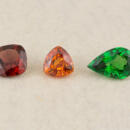
Gem in the Spotlight: Garnet
… the red – brown to orange sometimes with a tint of violet varieties. The grossular, demantoid and uvarovite are the Emerald green to yellow type. Garnets are beautiful and widely diverse gemstones… varieties brighten the world in colors of yellow to gold, bright orange to true orange, brown to cinnamon, pinks to greens, and of course many shades of red. Garnets are given as symbols of consistency, perseverance and good health. …
-
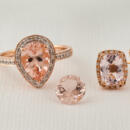
Gem in the Spotlight: Morganite
… popular gemstones. Morganite has an impressive family tree. It is a beryl gem which puts it in the same family as emerald and aquamarine. Because of its association with emerald it is sometimes called “Pink Emerald”. Other names for …. Its durability is rated as excellent. Its hardness is 7.5 – 8.0 on the Mohs hardness scale which is comparable to emerald, topaz, and spinel. Its refractive index is 1.560 – 1.600, and its specific gravity is 2.67 – 2.90. These …
-
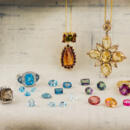
Gem in the Spotlight: Topaz
… softer than diamond which is a 10 and corundum (sapphire/ruby) which is a 9 on the scale. It is a bit harder than emerald at 7.5-8 and quartz which comes in at 7. Here are some more gemological stats for reference: Refractive index: 1.619 … shades is available from light Sky Blue to dark London Blue. Topaz is also found in less commonly known colors like green, pink, and purple. Imperial Topaz is by far the most valuable variety, while colorless topaz is often the least …
-
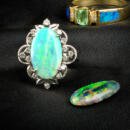
Gem in the Spotlight: Opal
…: “For in them you shall see the living fire of the ruby, the glorious purple of the amethyst, the sea green of the emerald, all glittering together in an incredible mixture of light.” During the Middle Ages, opal gained an interesting …packed together, you will get different colors. Opals can display just about every color of the rainbow, but hues of green and blue are the most common. Typically the higher end opals have a darker body color, and a wide range of colors. …
-
Synthetic Gems: The Whole Story
Ruby, sapphire, emerald and alexandrite are very beautiful gems and very rare in their stunning beauty. These four gems have been coveted by… years. But, what if anyone could own them? At gem shows and museums, I have seen jaw dropping rubies, sapphires and emeralds. These gems in high quality have put ownership beyond most people to justify the price. Just a one carat gem could …synthetic. Both, I feel, are impossible to identify in a piece of jewelry. Synthetic ruby, sapphire, alexandrite and emerald are very complex because there are different ways to make them. The inexpensive way to make the synthetic gems cost …
-
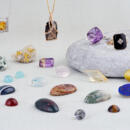
Gem in the Spotlight: Quartz
…is “Alaska Diamond” for rock crystal alongside “Herkimer Diamonds” (see below). In recent times, the term “Green Amethyst,” which was commonly used for Prasiolite, has come under fire. It even attracted the attention of the US Federal … gems can be stunningly beautiful and intricate. You can also see why Prasiolite has previously been referred to as “Green Amethyst.” Under the surface, all of these fancy names are just different ways of saying “Quartz!” Crystal Name …
-
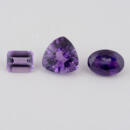
Gem in the Spotlight: Amethyst
… are an ability to quicken the intelligence, make the owner more successful in business, protect soldiers, assure victory, help hunters, guard against contagious diseases, and control evil thoughts. Amethyst was once as valuable as emeralds and rubies until very large deposits were found in multiple places around the world. Heavily increased supply dropped prices consistently over the last 200 years which is why, despite its beauty, amethyst is such an affordable stone …
-
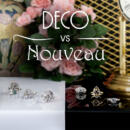
Art Deco vs. Art Nouveau Style Jewelry
… Machine Age. Precious metals like platinum and white gold alongside rare and valuable gemstones such as diamonds, emeralds, and sapphires, were the materials of choice for Art Deco jewelry makers. The most prevalent diamond cut found in Art… symmetry, bold contrast, simplicity Materials of Choice Silver, semi-precious stones, enamel Platinum, diamonds, emeralds Prominent Designers Louis Comfort Tiffany Cartier, Van Cleef & Arpels Main Diamond Cut Old Mine Cut Old European …
-

How Are Lab Grown Diamonds Made?
…. Diamonds are a crystalline form of carbon, and so making artificial carbon crystal was the problem of lab grown diamonds. For decades, manufacturers of synthetic gemstones tried growing diamonds like they grew rubies, sapphires, and emeralds. It failed. Then they had the idea to grow diamonds in the lab like they grew in nature. High Pressure High Temperature Diamonds How does nature form diamond crystals? Nature does it very deep underground. Diamond growing naturally …